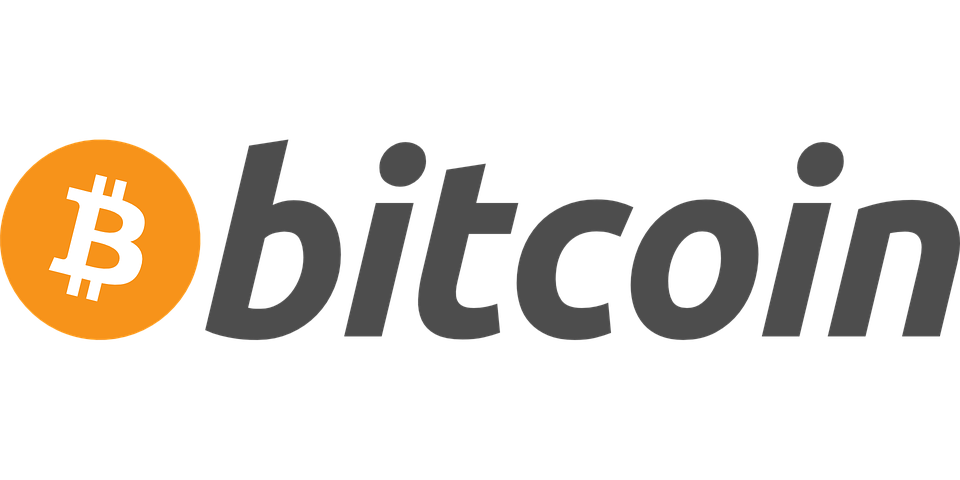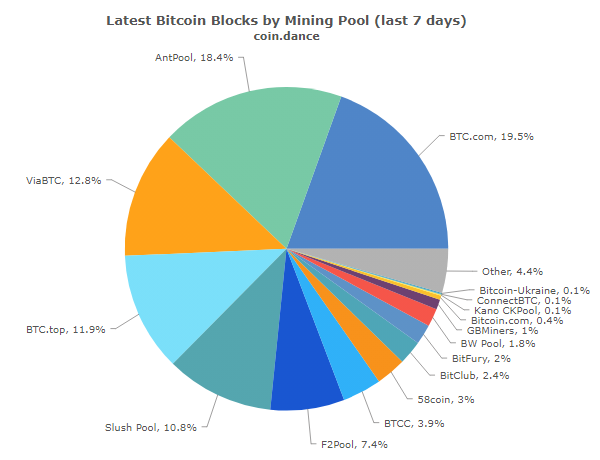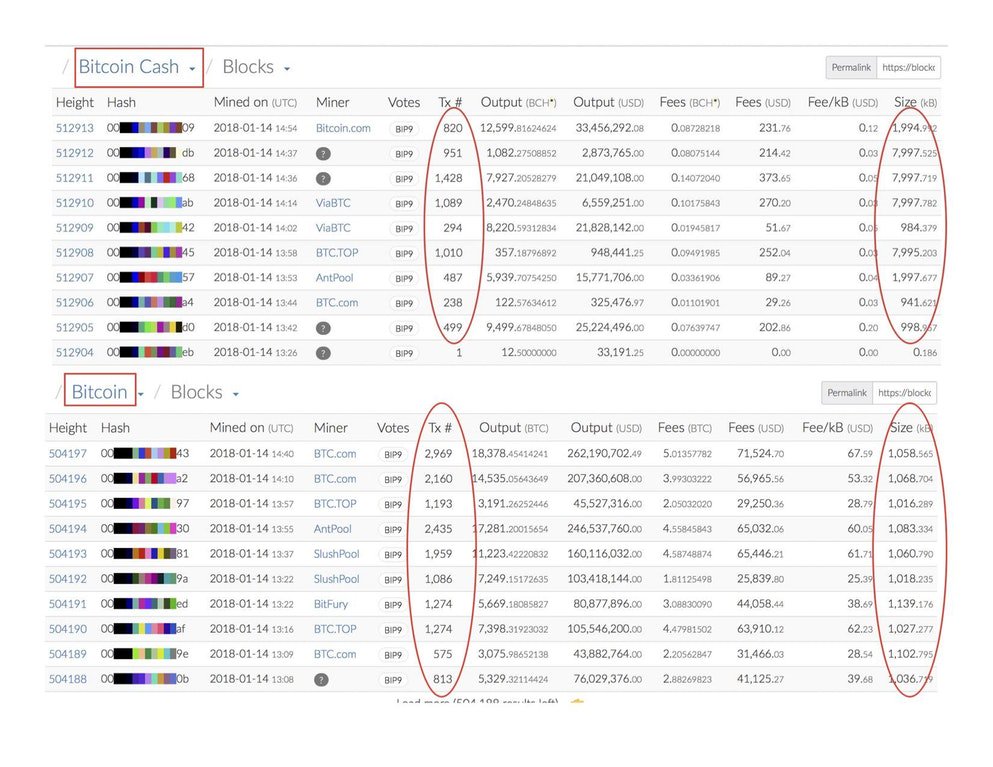Bit Coin Scaling Controversy - Big Block Problems
 It has been around for a bitcoin scaling (scalability) issue that has been going on over a long period of time. In this article, I will reorganize the articles I wrote about the Big Block in the past and try to sort out the bit coin scaling issues more easily. We will try to make it easy for beginners to understand it as much as possible.
It has been around for a bitcoin scaling (scalability) issue that has been going on over a long period of time. In this article, I will reorganize the articles I wrote about the Big Block in the past and try to sort out the bit coin scaling issues more easily. We will try to make it easy for beginners to understand it as much as possible.
What is BigBlock?
Big blocks mean simple. Now the block size in the bit coin now has a block size of 1-4 MB after SegWit (separate witness). This larger block size is called Big Block.
 A long, full block of nearly 1 MB is being created
A long, full block of nearly 1 MB is being created
After SegWit activation, the size of the 1MB block of the past bit coin is meaningless and forms a block size within 1 ~ 4MB depending on the ratio of SegWit transactions. The plan to double this block size is called a '2X hard fork.' However, the overwhelming opposition from the community is that this plan will not be activated and it will declare a temporary suspension. 2X hard forks will form a big block of 2 ~ 8MB. As the block size increases, there are some advantages for bit coin. As the block size increases, more transactions (transactions) become available. As you can handle more transactions, you can expect to see significantly lower shipping charges. Then why? Could it be that the big blocks that are currently suffering from scaling problems and improving the bit coin are not adopted? What is the reason why the big block plan, which can handle more transactions, is cheaper and has advantages, is overwhelmingly opposed by the community?
Big Block Problem
Despite the fact that the current bit coin scaling problem can be solved at once, there is a big problem (big disadvantage) in Big Block. Increasing the block size is not a difficult development task. It is a simple development task that anyone can modify a few lines of code. But to apply it, you have to change the rules of the existing block chain called 'hard fork'. Changing these block chain rules is not compatible with older versions, so users will need to update their power with a new version of the client. This can cause great confusion in large block-chain ecosystems. In the case of bit coin, hard fork is difficult to proceed because it is network aiming at huge decentralization. Hardforks always have the risk of disconnecting the network, and an overwhelming consensus (close to 100%) between network users is required to prevent such network disconnection.
The above problem is big ... Source: https://coin.dance/blocks/thisweek
Source: https://coin.dance/blocks/thisweek
China's mining pool, which has a hash rate of about 90%
As the block size grows, the network propagation speed becomes longer than before. More network charges will be charged, the block size will increase, network wastage increases, transfer checks slow, and orphan blocks increase. Bitcoin is located in China with almost a tremendous proportion of minors' networks (almost 90%). In China, we use the Golden Shield system in China called Great Firewall to censor a network through China. This means that the network speed is fast in China, but when connected to an external network, ie, a world network other than China, the delay will be several seconds. China's minors generate and propagate blocks, and China's minors spread quickly, and external minors are spread at a delayed rate, which is advantageous for China's minors in terms of block generation. The larger the block size, the more this effect is multiplied.
In this situation, as the network speed, the node cost to be maintained and the mining cost are increased, the number of minors generating direct blocks is reduced. In fact, in the current situation, the mining pool that directly generates blocks is still shrinking. If we assume that existing mining pools will survive in the future, we will concentrate on China with centralization. It has already been done.
As Chinese minors become more centralized, the average block size that matches their taste will be determined. At present, the bit coin network is saturated, so it is filled with 1MB, but as the block size increases, it can proceed with the commission policy that meets the taste of Chinese minors. In fact, BitMain CEO has complained about the current commission (about 1 to 3 BTC) that Twitter mentions. Recently, bit coin has a half-life (July 2016) and block compensation is 12.5BTC. Bit Coin Scaling Controversy - Big Block Problems
Bit Coin Scaling Controversy - Big Block Problems
coinkorea (64) in coinkorea • last month
It has been around for a bitcoin scaling (scalability) issue that has been going on over a long period of time. In this article, I will reorganize the articles I wrote about the Big Block in the past and try to sort out the bit coin scaling issues more easily. We will try to make it easy for beginners to understand it as much as possible.
What is BigBlock?
Big blocks mean simple. Now the block size in the bit coin now has a block size of 1-4 MB after SegWit (separate witness). This larger block size is called Big Block.
A long, full block of nearly 1 MB is being created
After SegWit activation, the size of the 1MB block of the past bit coin is meaningless and forms a block size within 1 ~ 4MB depending on the ratio of SegWit transactions. The plan to double this block size is called a '2X hard fork.' However, the overwhelming opposition from the community is that this plan will not be activated and it will declare a temporary suspension. 2X hard forks will form a big block of 2 ~ 8MB. As the block size increases, there are some advantages for bit coin. As the block size increases, more transactions (transactions) become available. As you can handle more transactions, you can expect to see significantly lower shipping charges. Then why? Could it be that the big blocks that are currently suffering from scaling problems and improving the bit coin are not adopted? What is the reason why the big block plan, which can handle more transactions, is cheaper and has advantages, is overwhelmingly opposed by the community?
Big Block Problem
Despite the fact that the current bit coin scaling problem can be solved at once, there is a big problem (big disadvantage) in Big Block. Block size ... Bit Coin Scaling Controversy - Big Block Problems
Bit Coin Scaling Controversy - Big Block Problems
coinkorea (64) in coinkorea • last month
It has been around for a bitcoin scaling (scalability) issue that has been going on over a long period of time. In this article, I will reorganize the articles I wrote about the Big Block in the past and try to sort out the bit coin scaling issues more easily. We will try to make it easy for beginners to understand it as much as possible.
What is BigBlock?
Big blocks mean simple. Now the block size in the bit coin now has a block size of 1-4 MB after SegWit (separate witness). This larger block size is called Big Block.
A long, full block of nearly 1 MB is being created
After SegWit activation, the size of the 1MB block of the past bit coin is meaningless and forms a block size within 1 ~ 4MB depending on the ratio of SegWit transactions. The plan to double this block size is called a '2X hard fork.' However, the overwhelming opposition from the community is that this plan will not be activated and it will declare a temporary suspension. 2X hard forks will form a big block of 2 ~ 8MB. As the block size increases, there are some advantages for bit coin. As the block size increases, more transactions (transactions) become available. As you can handle more transactions, you can expect to see significantly lower shipping charges. Then why? Could it be that the big blocks that are currently suffering from scaling problems and improving the bit coin are not adopted? What is the reason why the big block plan, which can handle more transactions, is cheaper and has advantages, is overwhelmingly opposed by the community?
Big Block Problem
Despite the fact that the current bit coin scaling problem can be solved at once, there is a big problem (big disadvantage) in Big Block. Block size ...In the past, until the last year, miners have filtered out spam transactions, but long ago, miners have included spam transactions. Nobody knows who is doing this spam attack, but there are not two suspicious minorities involved. I do not think this is what the miners have done wrong. They are part of the economic activity that they think, and nobody says it is wrong. To prevent this, there is nothing but systematic improvement. As you adopt Big Block, you will find it vulnerable to spam attacks.
Limitations of on-chain scaling (scalability)
Looking back at the above, is it impossible to solve the scaling problem while maintaining the value of decentralization of the bit coin block chain? To grow bit coins, you have to jump over the wall of scaling. But the scaling solution, Big Block, feels like a snack packed with nitrogen. Should we solve the scaling problem while undermining the fundamental realm of the block chain? Even in situations where there seem to be no answers, we have always solved the problem with new solutions.
"SegWit 1MB block is also dangerous"
- Bit Coin Core Developer Luke Dashjr
The scaling problem should be viewed from a long-term perspective. It is foolish to look at one or two years immediately and decide. The Bitcoin community is looking to maintain a long-term network. The Big Block, an on-chain scaling solution, is the last step in the bit coin, the last resort.
Scaling problems in the on-chain have become difficult to solve. It does not have to be solved in the on-chain. The limitations were clearly revealed. Now is the time to change the point. Several developers who are already involved in bitcoin are developing solutions that are not on-chain in scaling. The most talked about is the off-chain solution, Lightning's side-channel lightning network, side-chain of block streams, and bitcoin ...
Woff, woff!
Hello @shanto62, We have met 2 times already!
I'm a guide dog living in KR community. I can see that you want to contribute to KR community and communicate with other Korean Steemians. I really appreciate it and I'd be more than happy to help.
KR tag is used mainly by Koreans, but we give warm welcome to anyone who wish to use it. I'm here to give you some advice so that your post can be viewed by many more Koreans. I'm a guide dog after all and that's what I do!
Tips:
Unfortunately, Google Translate is terrible at translating English into Korean. You may think you wrote in perfect Korean, but what KR Steemians read is gibberish. Sorry, even Koreans can't understand your post written in Google-Translated Korean.
I sincerely hope that you enjoy Steemit without getting downvotes. Because Steemit is a wonderful place. See? Korean Steemians are kind enough to raise a guide dog(that's me) to help you!
Woff, woff! 🐶
good posting
have a good time
kr-guide!
팁투유님 여기도 있네요 ㅋㅋㅋㅋㅋㅋㅋㅋ
그래도 가이드독 포인트는 놔두고 가시는 자비를 ㄷ ㄷ
언제한번 팁투유님 댓글 없는 글 찾아오기 이벤트를 해야겠어요 ㅋㅋㅋㅋㅋ